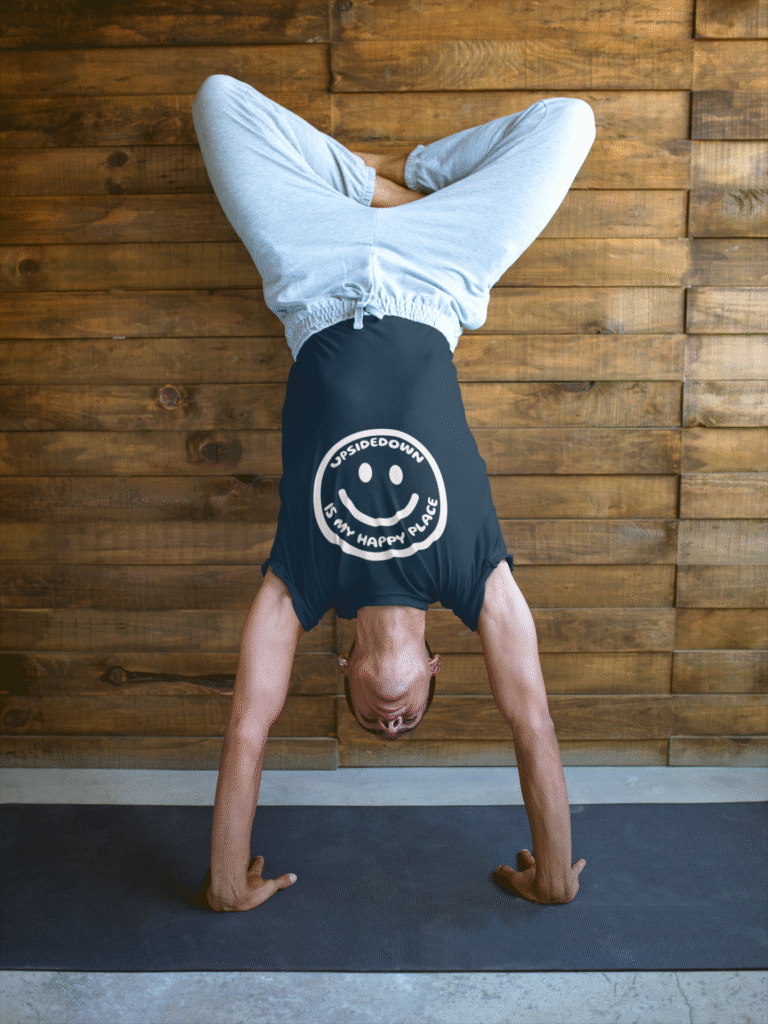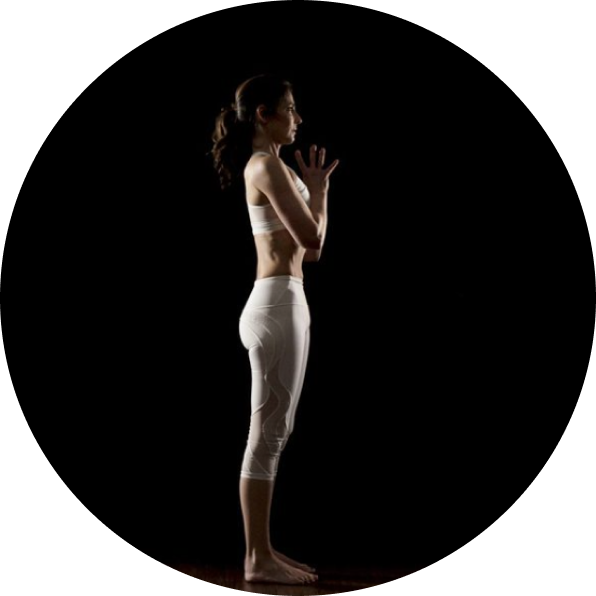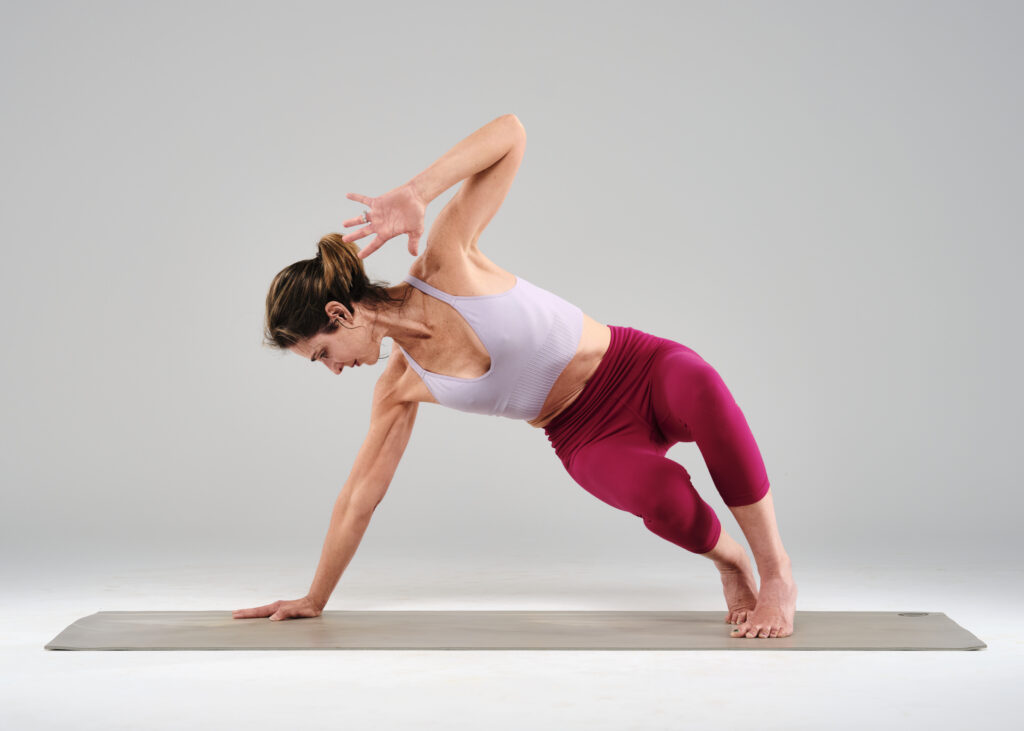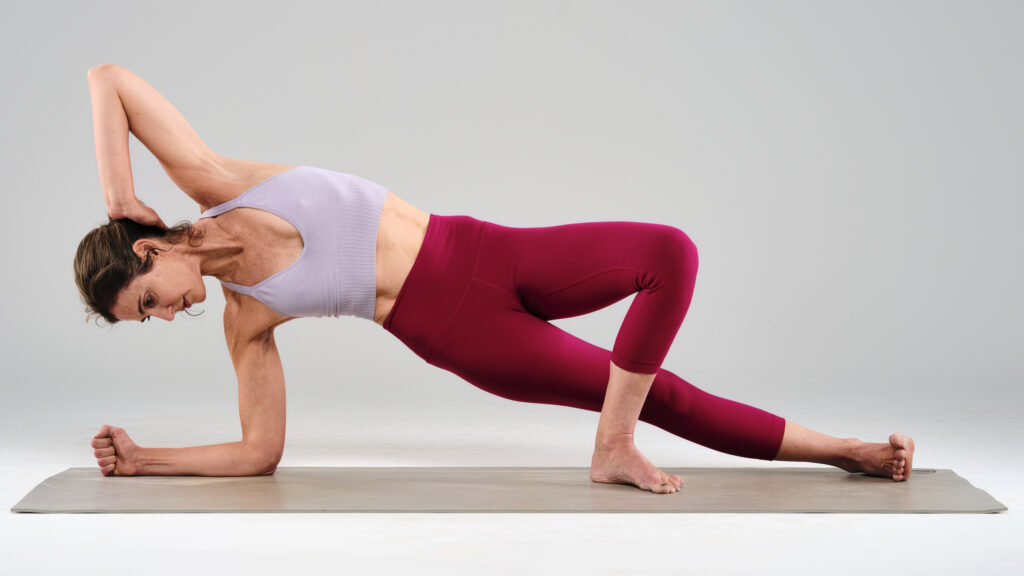When I first learned how to handstand nearly 20 years ago, I did it for the fun and challenge of trying something new. I didn’t know it then, but that skill would later become an essential part of every LYT® Yoga class I teach AND a foundation for healthy aging.
As we get older, we’re often told to walk more, stretch, or lift weights to stay strong and mobile. While these are all great practices, there’s one movement that often gets overlooked: getting on your hands.
After crawling as babies, most of us spend the rest of our lives upright, rarely returning to the floor unless we must. But supporting yourself on your hands — in positions like plank, quadruped, or downward dog — delivers powerful physiological and neurological benefits, especially as we age.
And no, you don’t need to be able to handstand to get them, but the process of learning a handstand will compound the interest of your work!
The Benefits of Weight-Bearing on Your Hands
1. Build Upper Body Strength and Bone Density
As we age, upper body strength tends to decline more rapidly than lower body strength. Add in the natural decrease in bone density — especially in areas like the wrists, shoulders, and spine — and you have a recipe for fragility and injury.
✅ Getting on your hands provides smart, functional loading for the bones and joints of the upper body.
✅ It helps maintain mobility in the wrists, elbows, and shoulders — joints that are often neglected in daily life.
✅ Weight-bearing through the arms can help prevent or slow the progression of osteoporosis.
2. Strengthen Core and Shoulder Integration
Supporting your body with your hands engages deep core stabilizers and encourages optimal shoulder girdle activation. These patterns:
- Improve posture
- Support spinal health
- Enhance stability and functional strength for daily activities, like carrying groceries or pushing up from the floor
BONUS: The coordination between the core and shoulders also improves balance and reduces fall risk.
3. Enhance Brain-Body Connection
Your hands are rich with sensory receptors. When you load through your palms, you stimulate proprioceptors (sensors that help you know where your body is in space) in the hands, wrists, elbows, and shoulders.
This sensory feedback:
- Activates important neural pathways
- Improves coordination and spatial awareness
- Helps preserve your brain’s ability to map and control movement
BONUS: Hand-supported exercise isn’t just physical — it’s neuroprotective.
4. Boost Confidence and Resilience
One of the most overlooked benefits of hand-supported movement is psychological. Many people develop a fear of the floor as they age, associating it with injury, frailty, or the dreaded “I’ve fallen and can’t get up” scenario.
By practicing movements on your hands:
- You reinforce your ability to get up and down from the floor with confidence
- You build real-world functionality (think catching yourself during a fall or pushing open a heavy door)
- You rewire fear into resilience
BONUS: Getting on your hands becomes an act of empowerment, not just exercise.
How to Practice Hand-Supported Movement (With or Without Handstands!)
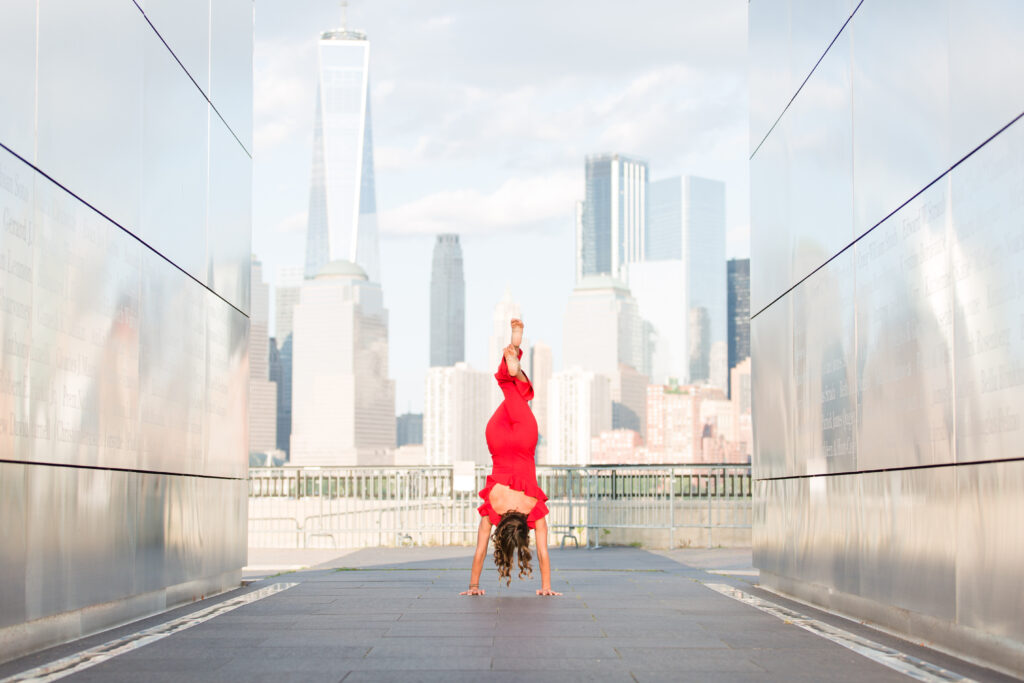
You don’t need to balance upside down to gain the benefits of weight-bearing on your hands. Here are accessible, effective LYT®-based exercises to start incorporating into your routine today:
Beginner-Friendly Hand-Supported Movements:
- Cat-Cow in Quadruped – Mobilize your spine and warm up your wrists
- Bear Pose Hover – Build core stability and shoulder strength
- Downward Dog or Forearm Plank – Strengthen the upper body and lengthen the back line
- Crawling Patterns – Reconnect brain and body with dynamic movement
- Quadruped Rocking – Create mobility through hips and shoulders with safe loading
- Modified Planks – Scalable for every level
- Down Dog on the Wall – Strengthen the wrists and shoulders with feet supported on the wall
- Hand and Knee Balance Drills – Train proprioception and balance
- Ground Transitions – Practice getting up and down with control
The Bottom Line
Getting on your hands isn’t just for kids or yogis — it’s a smart, sustainable movement strategy for aging well. It supports bone health, core strength, joint mobility, and neurological resilience, all while giving you the confidence to move through life with ease.
Incorporate hand-supported exercises into your daily or weekly routine, and you’ll notice improved posture, strength, balance, and self-trust. These simple movements unlock a powerful message:
“Aging isn’t about decline — it’s about adapting, connecting, and continuing to move with freedom.”
✨ Want to Learn More? Join me for classes inside the LYT Daily platform where we explore strength, mobility, and sustainable movement from the ground up — literally.
You May Like these:
- Personalizing Your LYT Practice
- personal-health-yoga-pose-practice
- Women’s Brain Health Needs More Attention
- How Chronic Inflammation Impacts Arteries, Bones and Cognition
🔥 NEW SWAG ALERT!! We’re excited to share our new LYT Yoga tanks and tees—perfect for getting upside down in style! With designs intentionally printed upside down, they’re made to inspire you mid-inversion. Choose from two empowering messages: “Shift Your Perspective” or “Upside Down is My Happy Place.” Available in a variety of colors and in both tanks and tees, they’re as functional as they are fun. Check them out at store.lytyoga.com.
